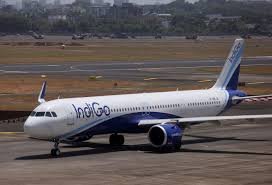
In a significant development for India’s aviation industry, IndiGo, the country’s largest carrier, has agreed to place a firm order for 30 A350-900 aircraft with Airbus. This decision marks a strategic shift for IndiGo, hinting at ambitious plans to expand its international footprint and compete in the long-haul market.
The groundwork for IndiGo’s venture into widebody aircraft began in 2017 when the airline expressed interest in acquiring the international business of Air India. Despite various challenges such as the fall of Jet Airways and the pandemic, IndiGo’s leadership remained committed to the idea of entering the long-haul market. Co-founder Rakesh Gangwal’s statement about the economic rationale behind this move reflects the airline’s strategic vision.
The 30 A350-900 aircraft order, with deliveries set to commence in 2027 and an option for 70 more planes, signifies IndiGo’s confidence in its growth trajectory. The airline’s evolution from a single fleet type strategy to a diversified fleet, including A320 variants, ATRs, and now widebody aircraft, demonstrates its adaptability and long-term planning.
IndiGo’s strategic partnerships with global airlines like Turkish Airlines, Qatar Airways, and others through codeshare agreements have strengthened its international network. This move aligns with the airline’s goal of establishing a franchise model abroad or expanding its widebody operations to serve destinations beyond its current reach.
While some may view IndiGo’s entry into widebody operations as a risk, especially for a low-cost carrier (LCC), the airline’s track record of success and market dominance suggests otherwise. IndiGo’s approach is not to directly compete with Air India but to capitalize on matured routes and growing markets, potentially including destinations across Europe, North America, and Australia.
The challenges of operating widebody aircraft in India, such as infrastructure limitations at major airports like Delhi, Mumbai, and Bengaluru, are acknowledged. However, IndiGo’s strategic positioning and operational efficiency are likely to mitigate these challenges effectively.
In conclusion, IndiGo’s decision to embrace widebody aircraft signifies a bold step towards consolidating its leadership in both domestic and international markets. This move not only reflects the airline’s growth ambitions but also underscores India’s evolving aviation landscape, where LCCs are increasingly venturing into new frontiers previously dominated by full-service carriers.
Sources By Agencies
 Digital Scoop India Official Platform of Digital Scoop India Featuring Latest & Best News #Articles #Bytes #Entertainment #DigitalScoopMagazine
Digital Scoop India Official Platform of Digital Scoop India Featuring Latest & Best News #Articles #Bytes #Entertainment #DigitalScoopMagazine



